Major and minor risk factors for postoperative abdominoplasty complications:A case series
Oona Tomiê Daronch,Renata Fernanda Ramos Marcante,Aristides Augusto Palhares Neto
Department of Plastic Surgery,State University of Sao Paulo,Botucatu,Sao Paulo 18618-687,Brazil
Keywords:Abdominoplasty Major complications Minor complications
ABSTRACT Background: Although abdominoplasty is a safe and popular surgery,it is associated with a higher complication rate than other body contouring procedures.Therefore,identifying predictive factors of major and minor complications in patients who have undergone abdominoplasty is necessary to achieve better treatment outcomes after major weight loss.Methods: This retrospective study analyzed the medical records of patients who underwent abdominoplasty between January 2016 and December 2019.The inclusion criteria were patients aged >18 years who underwent abdominoplasty as the only surgical procedure and had adequate follow-up.Other patients were excluded from the study.Statistical evaluation was performed using SPSS 20.0;statistical significance was set at a P-value of<0.05.Results: The study included a total of 152 patients,of whom 146 (96.1%) were women and 6 (3.9%) were men.The mean patient age was 41.1 ± 9.8 years.Comorbidities were reported in 67 patients (44.07%).A direct proportional relationship was observed between the weight of the resected tissue and occurrence of general complications(P=0.01),and the presence of comorbidities increased the occurrence of minor(P=0.04)and major complications (P=0.01).Conclusion: Abdominoplasty is an aesthetic surgical plastic procedure,and its application has increased over the years.Despite its popularity,patient safety requires further attention due to the high risk of complications.It is essential to study all risk factors.
1.Introduction
Abdominoplasty is a procedure widely used to improve body contour that was the fourth most commonly performed cosmetic surgery worldwide in 2018 (888 712 procedures),according to the International Society of Aesthetic Plastic Surgery.1At present,abdominoplasty is the fifth most common cosmetic surgery performed in the US,with an increase of 107% from 2000 to 2018.1This surgical procedure can be performed after major weight loss,such as after bariatric surgery.In the context of post-bariatric body contouring surgeries,abdominoplasty is the main surgical option for this group of patients1because the abdomen is the location that post-bariatric patients express the most dissatisfaction toward,although other surgeries are also widely used,such as mammaplasty,brachioplasty,and thighplasty.
Given its widespread use in various groups of patients,it is also important to understand the complications of this procedure and study the factors that contribute to its incidence.Although abdominoplasty is a safe and very popular surgery,it is associated with a higher complication rate than other body contouring procedures.2Thus,it is necessary to expand knowledge about predictive factors for complications in patients treated with abdominoplasty to achieve better patient management after major weight loss.
This study aimed to conduct a retrospective analysis of patients undergoing abdominoplasty using the most diverse surgical techniques,considering relevant pre-and postoperative information,to determine whether the presence of comorbidities and other perioperative factors interfere with treatment outcomes.The study analyzed major and minor complications that developed during the postoperative period for abdominoplasty,both in patients who has undergone bariatric surgery and in those who had not previously undergone gastroplasty.The study of these factors can change patient management strategies used preoperatively and intraoperatively as well as surgical indications,consequently improving long-term treatment outcomes.
2.Materials and methods
This retrospective study analyzed the medical records of patients who underwent abdominoplasty between January 2016 and December 2019.The study was approved by our institution’s Ethics Committee,and all patients provided written informed consent to publish the data contained in this study.The inclusion criteria were patients aged >18 years who underwent abdominoplasty as the only surgical procedure and had adequate follow-up with complete medical records for the study.The exclusion criteria were as follows:patients who underwent abdominoplasty along with other procedures (except liposuction,in which lipoabdominoplasty was performed);incomplete medical records for data evaluation;age <18 years;those who underwent secondary abdominoplasty;and those with adequate postoperative followup data.Patients with a postoperative period of at least one year were included;therefore,patients who underwent abdominoplasty in 2020 were not included.
Patients were selected through an electronic search of all surgeries performed by the Plastic Surgery Department assigned in the institution’s Surgical Center system using the codes of the Unified Health System“Non-aesthetic Abdominal Dermolipectomy” or “Dermolipectomy postgastroplasty.” Thus,the study had selection bias as patients who were verified for these surgeries but were registered with other codes of procedures were not included,and patients who were verified for other surgeries but were registered with these codes needed to be excluded from the study.After the initial selection,the medical records of the patients were reviewed,and only those who had undergone the surgery that was recorded with the correct procedure were included,with the exclusion of patients whose surgical description presented a description of the other surgery concomitant with abdominoplasty (except liposuction performed in combination with abdominoplasty).
The qualitative variables studied were sex,race,surgical technique used,presence of comorbidities(systemic arterial hypertension,diabetes mellitus,hypothyroidism,depression,anxiety,history of previous cardiovascular disease),normal life conditions and habits(smoking and alcoholism),presence of minor complications (seroma,hematoma,surgical wound infection,surgical wound dehiscence,hypertrophic scar,keloid,neuropathic pain,and mild cellulitis),presence of major complications(pulmonary thromboembolism,venous thrombosis),presence of hematoma or healing problems,and drain placement.The quantitative variables analyzed were age,surgery time,length of hospital stay,weight,and body mass index (BMI) during the preoperative period,as well as weight gain or loss (measured during the postoperative period between three months and one year postoperatively).It was not possible to standardize the time of weight gain or loss after surgery because there was no standardized data in the postoperative medical appointments to record postoperative weight.
Complications can be categorized into major and minor based on their severity.Minor complications include seroma,hematoma,infection,surgical wound dehiscence,hypertrophic scars,keloids,and others that can be treated mostly in the outpatient setting.In contrast,major complications are defined as those requiring reoperation or hospital readmission,or presenting as thromboembolic events and fatalities,such as venous thromboembolism and pulmonary thromboembolism.
Data were tabulated in the Google Docs form,which resulted in a spreadsheet,and then the data were verified through statistical programs for this purpose,using SPSS 20.0.Binary logistic regression analysis was performed to identify the risk factors that contributed to the occurrence of complications to avoid inadequacies.Statistical significance was set at a P-value of <0.05.
The surgical techniques used were conventional abdominoplasty(Fig.1),anchor abdominoplasty or fleur-de-lis (Fig.2),circumferential abdominoplasty(“belt”;Fig.3),and lipoabdominoplasty(in which both procedures were combined;Fig.4).Conventional abdominoplasty was defined as the standard abdominoplasty technique,including skin and soft tissue excision to or from the umbilicus with weakening of the upper abdominal flap for the xiphoid process and rib cage and transposition of the umbilicus upon closure of the abdomen with resulting transverse and periumbilical scars.Anchor abdominoplasty involves contouring the anterior abdomen using both transverse and vertical incisions in a Tshape.Finally,circumferential abdominoplasty,or lower circumferential body lift,includes anterior abdominoplasty that extends to the flanks and buttocks bilaterally,creating a circumferential scar with the contour of the entire back in this region.
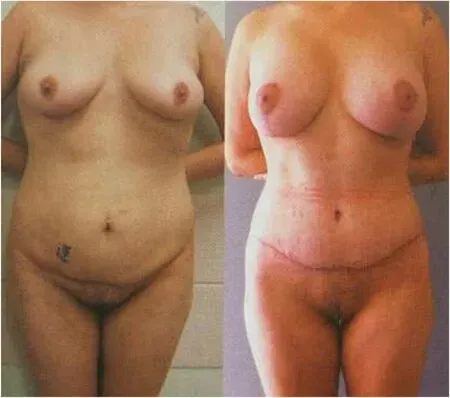
Fig.1.Images captured preoperatively (left) and 6 months after (right) conventional abdominoplasty.
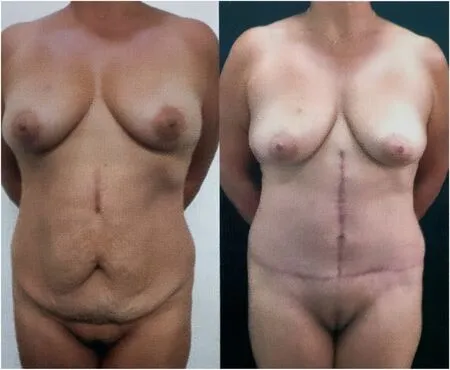
Fig.2.Images captured preoperatively (left) and 6 months after (right) anchor abdominoplasty.
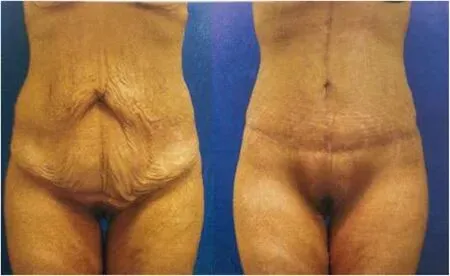
Fig.3.Images captured preoperatively (left) and 6 months after (right) circumferential abdominoplasty.
Regarding the choice of surgical technique,anchor abdominoplasty(fleur-de-lis or anterior abdominoplasty) was selected for patients with excess skin and flaccidity in the supraumbilical region and when performing only conventional abdominoplasty was not possible.Circumferential abdominoplasty was performed mainly as a body contouring surgery in patients after bariatric surgery that dissipates tissue in both posterior and anterior abdominal regions and is generally associated with the liposuction procedure.
A suction drain(Portovac®)was placed in all patients,and two drains(one anterior and one posterior) were placed in all patients undergoing circumferential abdominoplasty.The criterion for drain removal was a flow of <40 mL.All patients underwent antibiotic prophylaxis with 2 g cefazolin at the time of anesthetic induction.In addition,all patients received mechanical compression (compression stockings) for 30 days postoperatively and medication (low-molecular-weight heparin) during the hospital stay.
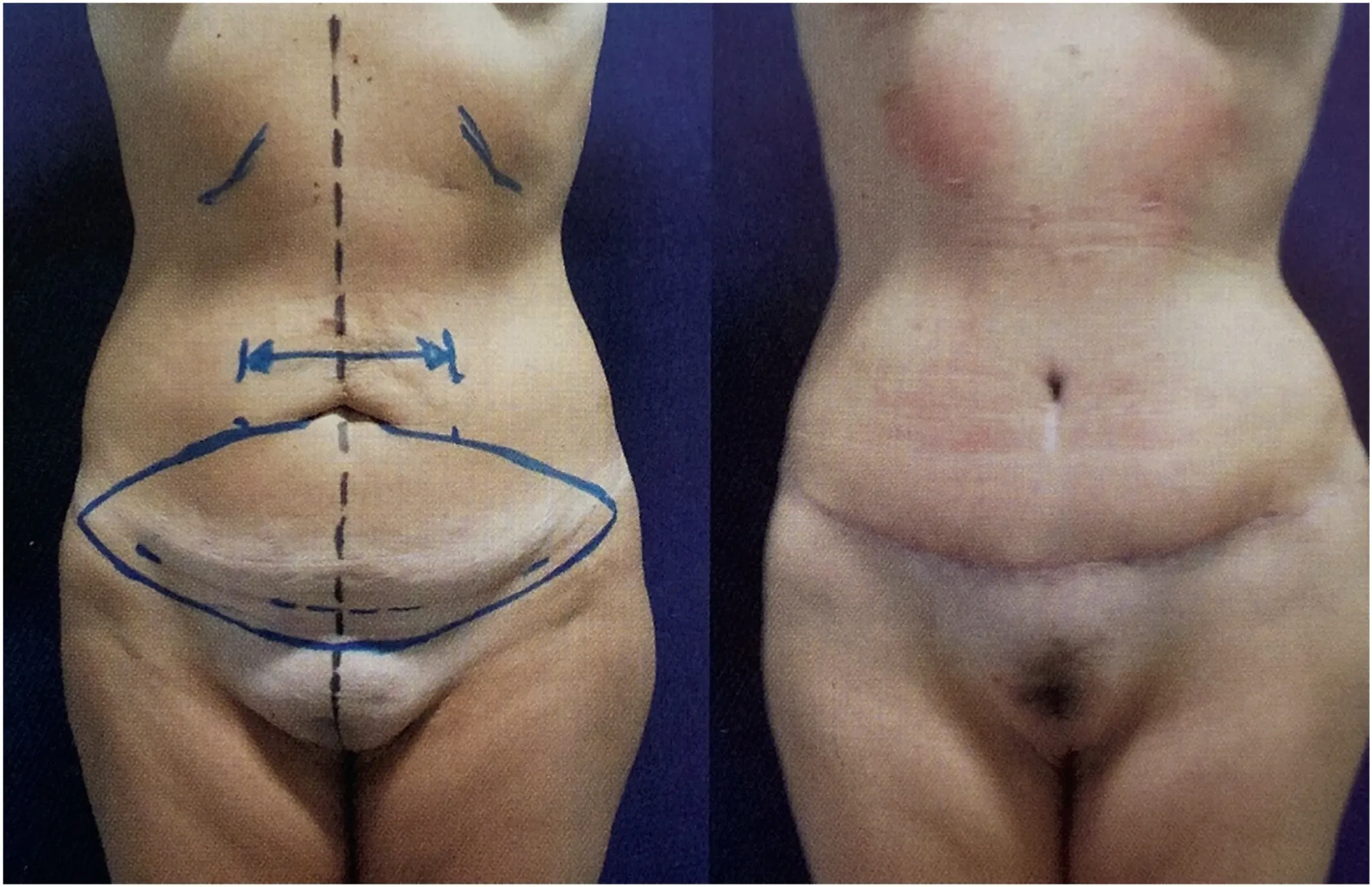
Fig.4.Images captured preoperatively (left) and 6 months after (right) lipoabdominoplasty.
3.Results
Of the 172 patients who underwent abdominoplasty at the University Hospital Faculty of Medicine,Botucatu,between January 2016 and December 2019,20 patients were excluded from the study because they underwent abdominoplasty with another concomitant aesthetic procedure not performed only in the abdominal region and had incomplete medical records for the study.Thus,the sample size in the present study was 152 patients,of whom 146(96.1%)were women and 6(3.9%)were men.The most common race was white(96.1%),followed by mixed race(2.0%) and black (1.3%).The mean age of the patients was 41.1 ± 9.8 years.Information regarding length of hospital stay,mean time for drain removal,and amount of drain upon removal is presented in Table 1.
The total incidence of comorbidities was 44.07% (67 patients),and 24 patients (15.79%) had more than one comorbidity.It was observed that 6 patients were smokers (10.52%) and 32 patients presented with anxiety(21.05%),13 with depression(8.55%),15 with systemic arterial hypertension(9.87%),11(7.23%)with hypothyroidism,4 with diabetes mellitus (2.63%),and 2 (1.31%) with a history of alcoholism.The presence of comorbidities is summarized in Table 2.

Table 1.Continuous and discrete quantitative variables related to postoperative hospitalization and use of drain.

Table 2.Incidence of comorbidities and general complications.
Regarding the surgical technique performed,lipoabdominoplasty was predominant in most patients(83,54.6%),followed by anchor abdominoplasty in 44 patients (28.9%),conventional abdominoplasty in 15 (9.9%),and circumferential abdominoplasty (5.9%) in 15 (9.87%).There was a concomitant repair of the hernia in the abdominal wall to allow the proper performance of the proposed abdominoplasty.The average weight of the resected tissue was 1 164.35 g.The mean surgical time was 278.14 min.Of all patients included in the study,only over a quarter (27.6%) underwent post-gastroplasty abdominoplasty and the remaining 110 patients (72.4%) underwent non-aesthetic abdominoplasty.Aesthetic satisfaction with the results of the surgery was reported by 139 patients(91.4%),as shown in Fig.5.
When assessing the factors that may interfere with the incidence of complications,it was not possible to verify the statistically significant association with surgical time(P=0.09)or age above 60 years(P=0.58),but a relationship between the incidence of complications and the surgical technique used was found(P=0.002),as shown in Fig.6.A directly proportional relationship was observed between the weight of the resected tissue and the incidence of complications during the postoperative period(P=0.01).
Regarding the presence of general complications,58 patients(38.2%)developed some type of complication,with a significant value(P<0.001).Fifty-seven patients (37.5%) had minor complications and four (2.6%)had major complications.Four patients with minor complications developed major complications.Of the major complications,three patients (75%) required a surgical approach to abdominal wall infection and one(25%)presented deep vein thrombosis.Of the four patients with major complications,three also developed minor complications:one with hypertrophic scar,one with surgical wound infection,and another with wound dehiscence.In one of the patients who underwent surgery due to infection,the aspiration drain had been functioning improperly postoperatively.
Although men had poorer abdominoplasty results than women,it should be noted that they had a significantly higher number of complications in general(P=0.002),and more older women tended to undergo abdominoplasty than older men in the present study(P=0.04).No cutoff point was found for the increase in the occurrence of complications.There was also no relationship between longer surgery time and longer hospital stay (P=0.12).
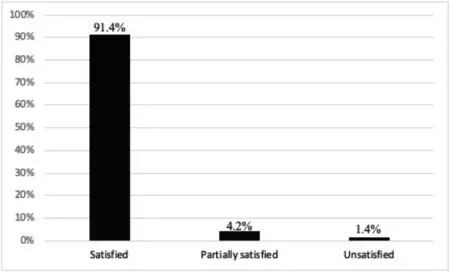
Fig.5.Aesthetic satisfaction with the surgical outcomes.
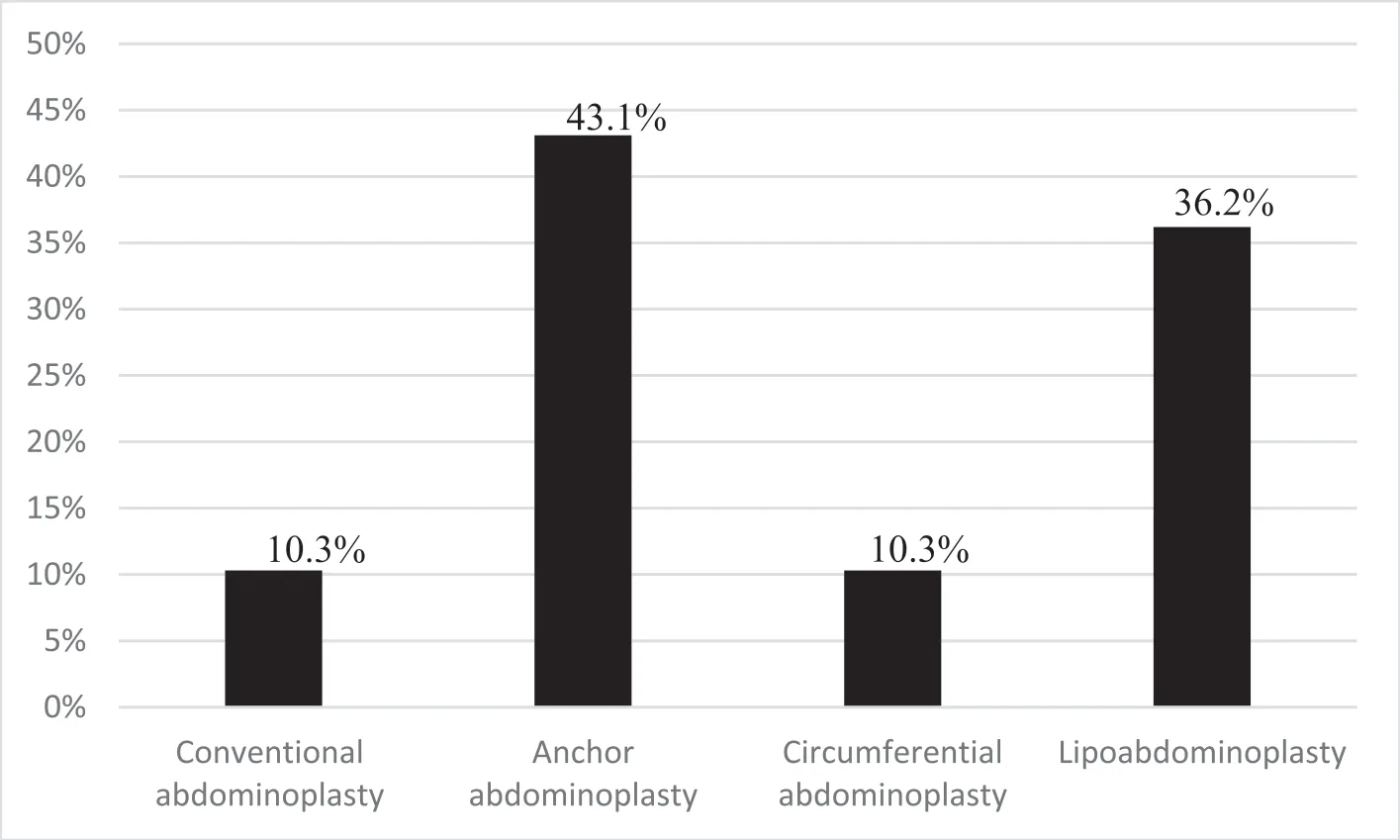
Fig.6.Relationship between the surgical technique and occurrence of complications.
The presence of both minor (P=0.04) and major complications(P=0.01) increased the occurrence of major complications (P=0.02).Fig.7 illustrates the percentage of minor complications considering the most diverse comorbidities.There was no association between age and an increase in complications (P=0.82);however,an association was observed between a higher degree of aesthetic satisfaction with surgical outcomes and a lower impact of complications(P=0.002).
Regarding patient weight and incidence of complications,it was possible to verify that patients with higher weight during the preoperative period had higher incidence of complications (P=0.012),but it was not possible to make the same association in relation to preoperative BMI(P=0.19).
4.Discussion
Abdominoplasty is a common aesthetic surgical procedure.Despite its popularity,patient safety requires attention due to the high risk of complications.A study conducted in Portugal last year included 191 patients who underwent abdominoplasty between 2014 and 2018.3Overall,the average age was 43.1 years,with the majority of patients being women (90.1%).More than half of the patients (53.4%) had previously undergone bariatric surgery.The overall complication rate was 32.5%.The rate of minor complications was 27.7% and that of major complications was 7.9%.The most common complication was seroma (20.9%),and cases of skin necrosis,thromboembolic complications,or death were not observed.Regarding epidemiology in the present study,the results were similar with regard to the mean age of patients (41.1 years) and the incidence of complications in women(96.1%).In general,the incidence of complications was slightly higher(38.2%),with 37.5% of minor complications and 2.6% of major complications;the definition of major and minor complications was similar to that in our study.
Another study conducted on 206 patients who underwent abdominoplasty between 2014 and 2018 at a university hospital in Brasília also showed results similar to the present results,but with a higher rate of major complications.4A total of 194 patients were included,of whom 182(94.2%)were women and 12(5.8%)were men,with a mean age of 43 years at the time of surgery.Most patients were white,with minorities representing only 10.19% of the total population,as identified in the present study.The overall complication rate (major and minor) was 37.4%.When classified based on severity,the major complication rate was 16.0% and minor complication rate was 26.7%.A total of 100 complications occurred in 77 patients.The most common complications were seroma (17.4%),cellulitis (9.2%),wound dehiscence (7.2%),wound necrosis(6.7%),and hematoma(5.8%).
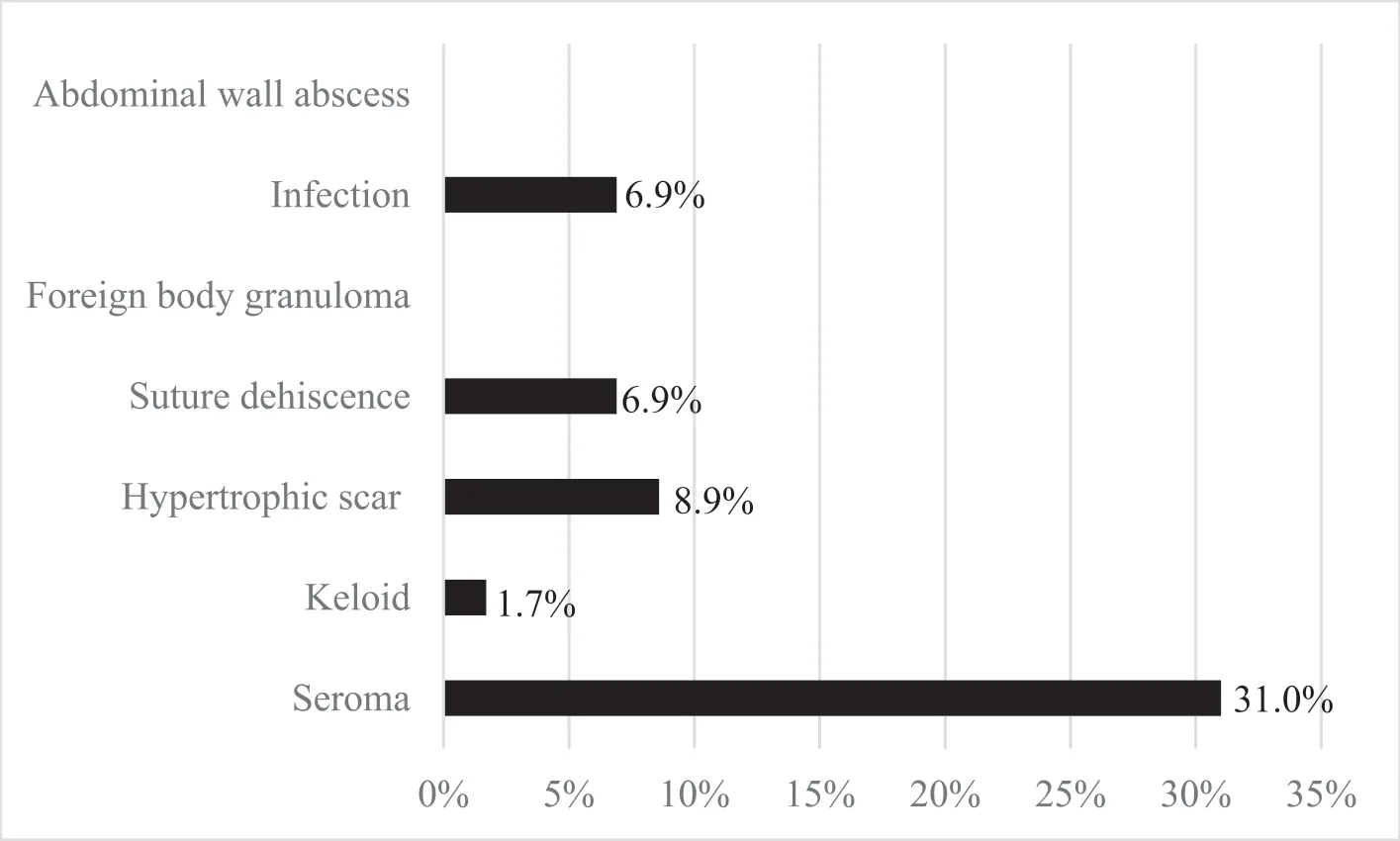
Fig.7.Percentage according to comorbidities and minor complications (n=58).
Regarding the most common complications,seroma ranks first,and most seromas usually develop after repeated puncture and aspiration,which is considered a minor complication.Different surgeries have been proposed to reduce the risk of seroma.5One is the preservation of Scarpa’s fascia while lifting the abdominal flap,leaving it attached to the rectus abdominis and external oblique muscle fascia.
In the same study conducted in Brasília,4it was also observed that obese patients had an increased rate of total complications,compared with that in nonobese patients,especially those with seroma,cellulitis,wound dehiscence,and abscess.Another study that evaluated 406 patients undergoing abdominoplasty identified higher BMI and greater resection weight as risk factors (P=0.004 and P<0.001,respectively)associated with increased complications.2Similarly,in this study,complications had a greater impact on patients who were heavier preoperatively(P=0.012).It was also noted that a greater weight of resected tissue presented a higher occurrence of complications during the postoperative period(P=0.01).Moreover,abdominoplasty combined with procedures in another region of the body6(i.e.,face,breast,or body) increases the rate of complications by 4.8%;therefore,in the present study,we decided to include only patients who underwent abdominoplasty at the same surgical time.
It has been reported that 40% of all operations and 7.5% of cosmetic interventions in the United States were performed in patients over 65 years.7Considering that the life expectancy of the global population in general has increased over the decades,it is important to study whether age is a risk factor for the occurrence of complications during the postoperative period for abdominoplasty,but this is a controversial topic.Some studies have shown that age is an independent risk factor for surgical complications in various specialties.3In a recent study conducted in Cleveland,United States,with 129 patients collected for abdominoplasty,there were no significant differences in the incidence of local or systemic complications between the older and younger age groups,although the highest age group had the highest score on the American Society of Anesthesiologists Physical Status Classification System (P<0.001).In the present study,it was also not possible to verify the greater number of complications in older patients(P=0.58).
In addition to age,sex is also an important variable to be studied regarding the occurrence of complications.The vast majority of abdominoplasty procedures are still aimed at women,with little attention paid to men,who still represent a smaller fraction of the cosmetic surgery industry in general.8Some hypotheses can be derived from this,one of which is that women have an incorrect perception of their image and lowered self-esteem,sometimes caused in areas such as work,relationships,and social activity.They tend to accept cosmetic surgery more readily than men because of higher expectations about their physical appearance.In addition,men are more concerned about pain,risk,and recovery time from surgery.They can be the sole source of income in the family;they are hesitant to undergo abdominoplasty,considering the time away from family and work.
There is evidence in the literature that men,despite being the group with the lowest rate of abdominoplasty,have the highest occurrence of postoperative complications,especially seroma.8The population of male patients showed an increasing trend toward major complications(33.3%vs.14.9%,P=0.092).4In the present study,it can be confirmed that men had a higher risk of postoperative complications than women.
In a study conducted in Spain on 72 patients who underwent bariatric surgery,the level of satisfaction was measured using a table survey,expressed on a Likert-type scale,with a high level of patient satisfaction (>80%).9Furthermore,in a personal interview with an independent observer,it was found that there was a certain degree of dissatisfaction fundamentally related to the postoperative complications of the surgical procedure and not,interestingly,to the aesthetic result of the surgery.In our study,it was also possible to verify the high aesthetic satisfaction of patients with surgical outcomes (91.4%) and their satisfaction with the presence of postoperative complications,that is,patients with lower complication rates had a higher aesthetic satisfaction with compensation.
Regarding the surgical technique used,a study conducted on 1.128 patients who underwent abdominoplasty observed that the most commonly performed intervention was abdominoplasty with umbilical transposition (71.2%),followed by subumbilical abdominoplasty(23.5%).These procedures were performed in association with liposuction in 353 patients(31.28%),diastasis treatment in 345(30.58%),and abdominal wall hernia treatment in 124 (10.99%).10The present study showed that most patients underwent lipoabdominoplasty (54.6%),followed by anchor abdominoplasty (28.9%);in 15 patients (9.87%),concomitant hernia repair in the abdominal wall was not performed to allow the performance of the proposed abdominoplasty.
The surgical technique is known to be related to the occurrence of complications during the postoperative period,possibly due to the amount of tissue removed from the flap and the amount of tissue resected for the correct performance of the surgical technique.In a review of patients who underwent abdominoplasty over a 12-year period,anchor(or fleur-de-lis) abdominoplasty increased the rate of postoperative complications (P=0.04).11Our study findings corroborate this finding,showing that the anchor abdominoplasty technique is associated with higher incidence of complications(P=0.002).
5.Conclusion
Abdominoplasty is an aesthetic surgical procedure,and its performance has increased over the years.Despite its widespread use,patient safety requires more attention because of the high risk of complications.The main factors related to the higher complication rate are the surgical technique used,male sex,greater weight in the preoperative period of surgery,presence of comorbidities,and prolonged surgical time.Therefore,it is important to pay attention to the modifiable risk factors,providing guidance to patients regarding weight loss and adequate control of comorbidities in the preoperative period,to reduce the occurrence of major and minor complications and improve the long-term outcomes of abdominoplasty.
Ethics approval and consent to participate
The study was approved by the Ethics Committee of the State University of Sao Paulo (approval no.50990521.1.0000.5411).All participants provided written informed consent prior to study enrollment.
Consent for publication
All the patients gave written informed consent to publish the data contained within this study.
Competing interests
The authors declare that they have no competing interests.
Authors’ contributions
Daronch OT:Conceptualization,Methodology,Writing-Original draft.Marcante RFR:Formal analysis,Writing-Review and editing.Neto AAP:Project administration,Supervision,Visualization.
 Chinese Journal of Plastic and Reconstructive Surgery2022年2期
Chinese Journal of Plastic and Reconstructive Surgery2022年2期
- Chinese Journal of Plastic and Reconstructive Surgery的其它文章
- Foreword from Professor Yu-Ray Chen
- Analyzing the correlation among the five indications of the regenerative effectiveness of expanded skin:A retrospective study of 277 expansion cases
- Anesthetic injection pain and hematoma occurrence during upper blepharoplasty:Comparison between thin needles and thick needles
- Assessment and management of immature facial scars by non-surgical methods
- Minimally invasive method to treat a rare wrist injury with simultaneous fractures of the scaphoid and hook of hamate:A case report and literature review
- Bowen’s disease with multiple lesions of the penis and scrotum:A case report
